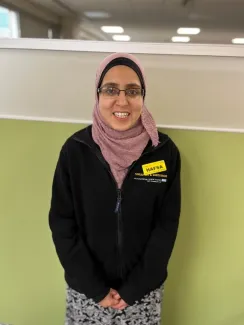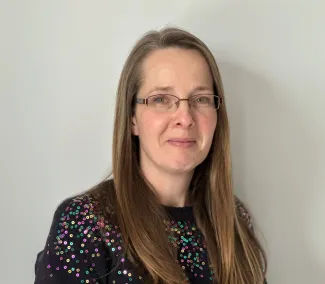A multidisciplinary team (MDT) is a group of healthcare professionals with different areas of expertise who work together collaboratively to oversee and deliver the best possible care for every child diagnosed with cancer. MDTs are especially important in paediatric oncology because managing childhood cancer is complex and multifaceted.
A typical MDT consists of paediatric oncologists, haematologists, surgeons, radiologists, pathologists, radiation oncologists, nurses, psychologists, dieticians, physiotherapists, social workers and pharmacists, with many members national or international experts in their field. Sometimes, other specialists are invited to join if their input would be helpful in a particular child’s care.
MDTs allow professionals to pool knowledge and skills so every child receives a tailored care plan that addresses their unique medical, emotional and social needs. Being cared for by specialist teams who work and communicate well together offers clear benefits over being managed by one individual. Collaborative, multidisciplinary working is essential to providing a consistent, coordinated and holistic approach. It enhances decision making, reduces the risk of errors, and ensures each child is given effective, individualised treatment.
How does communication among disciplines impact the effectiveness of an MDT?
Effective communication is key to ensuring effective multidisciplinary working. In paediatric oncology, the complexity of treatment pathways requires seamless information-sharing between disciplines. For example, an oncologist must communicate with a surgeon to coordinate the timing of tumour removal after chemotherapy. Similarly, radiologists need to share imaging results promptly with the entire team to influence treatment planning.
Treatment for childhood cancer is often delivered in more than one hospital, and good communication between teams is crucial to allow effective delivery of care. Many children have treatment planned and coordinated by the oncology team at a principal treatment centre (PTC) and jointly administered locally at smaller paediatric oncology shared care units (POSCUs). Some children require highly specialist treatment, such as sarcoma surgery, carried out at quaternary centres far from home.
Clear communication ensures that every team member has a shared understanding of the child’s condition, treatment goals and progress. Regular MDT meetings, shared electronic health records and well-structured communication protocols are essential for effective collaboration. Open and respectful dialogue allows every team member to contribute their perspective, enhancing decision making and ultimately improving outcomes for the child.
Can you provide an example of how shared decision making benefits individual children?
Shared decision making in paediatric cancer care is vital because it ensures that treatment plans are tailored to each child’s unique circumstances. For example, in the case of a 10-year-old child diagnosed with a brain tumour, the oncologist recommends chemotherapy, but the neurosurgeon suggests surgery may offer a better outcome. Meanwhile, the radiation oncologist believes that radiotherapy could shrink the tumour more effectively. The psychologist raises concerns about the child’s anxiety and the potential psychological impact of prolonged treatment.
During an MDT meeting, these perspectives are discussed in detail. The radiologist describes the child’s scans and discusses the intricacies and potential morbidity of surgery and radiotherapy with the team. By integrating input from all disciplines, the team decides the best approach to recommend to the family: starting with surgery to remove the bulk of the tumour, followed by radiotherapy and chemotherapy to consolidate treatment. The psychologist devises a support plan to prepare the child and their family for the treatment process.
This shared decision making ensures the chosen plan maximises medical benefits while considering the child’s mental and emotional wellbeing. The result is a holistic approach that improves both survival rates and quality of life.
What role do families play in MDT discussions, and how is their input integrated?
Families are central to the decision-making process in children’s cancer care. Parents or caregivers often serve as the primary advocates for their child and provide critical insights into their personality, preferences and needs. In MDT discussions, the child’s oncologist plays a key part in advocating for families to ensure the plan aligns with their values and goals. Final decisions should always involve discussion and collaboration with families to ensure decisions are made holistically in the interests of the child.
When considering a treatment plan, the team may present multiple options to the family, explaining the benefits, risks and potential side effects of each. If a family expresses a preference for a less invasive approach to maintain their child’s quality of life, the team can adjust the plan accordingly. MDTs must communicate in clear, jargon-free language and create an environment where families feel heard and respected. Building trust and establishing open lines of communication ensures families are active participants in their child’s care.
How do MDTs ensure continuity of care for children undergoing cancer treatment?
Continuity of care is critical in paediatric oncology, as treatment often spans years and involves multiple stages. MDTs achieve continuity by maintaining regular communication and consistent documentation across disciplines.
Clinical nurse specialists play a key role in bridging communication between disciplines and keeping families informed. This continuity not only improves outcomes but also provides families with a sense of stability during a challenging time. When a child transitions from active treatment to survivorship care, the oncologist hands over detailed treatment summaries and follow-up plans to the GP and late effects team. This ensures the child receives appropriate monitoring for late effects of treatment, such as heart or endocrine issues, without gaps in care.
How do MDTs support the emotional and psychological needs of children with cancer?
Children with cancer face significant emotional and psychological challenges, including fear, anxiety and feelings of isolation. MDTs play a crucial role in addressing these needs by involving psychosocial specialists such as psychologists and social workers. A child undergoing painful treatments might benefit from sessions with a psychologist to develop coping strategies. A play specialist can use play therapy to explain medical procedures in an age-appropriate way, reducing fear and promoting understanding. These efforts are integrated into the overall care plan, ensuring emotional support is considered as an essential component of holistic care.
What’s the impact of MDT working on long-term outcomes for children with cancer?
The long-term outcomes of children with cancer are significantly improved by MDT working. Survival rates have increased dramatically over the past few decades, in part due to the collaborative efforts of MDTs. By combining expertise from multiple disciplines, MDTs ensure that treatment is both effective and individualised.
MDTs are also instrumental in managing late effects of treatment. By involving specialists in survivorship care, MDTs provide ongoing support to children and their families, helping them lead fulfilling lives post-treatment.
How does MDT working contribute to innovation and research in paediatric oncology?
Collaboration among disciplines encourages the exchange of ideas and participation in clinical trials. For example, MDTs might identify a child who is a good candidate for a trial of a new immunotherapy drug, based on insights from oncologists, immunologists, and geneticists.
MDTs also contribute to the development of best practices and guidelines by sharing their experiences and outcomes. This continuous learning cycle drives progress, ensuring that children receive the most advanced and effective treatments available.
From Contact magazine issue 106 | Spring 2025




